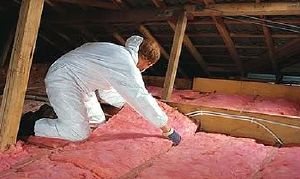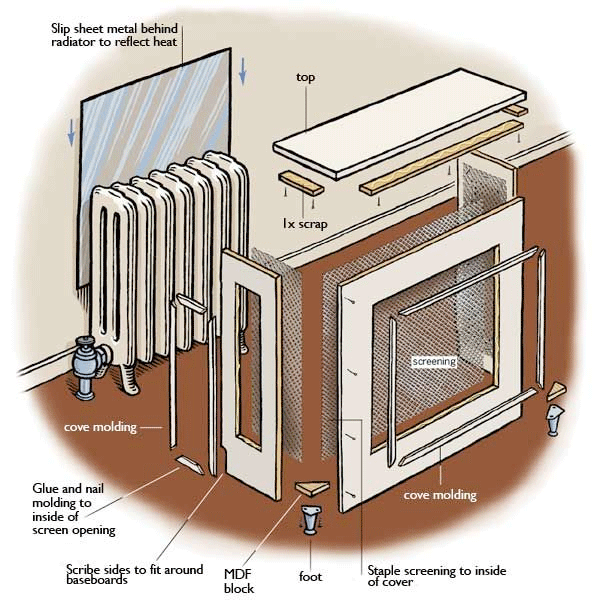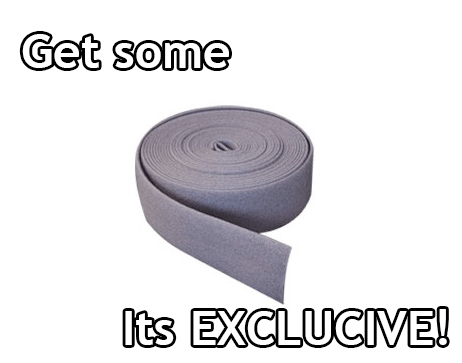 Insulating your home is one of the best investments you can make for your property. A home that is well insulated loses less heat in winter, which can result in reduced energy bills. Whilst insulating can cost money, research proves that it soon pays for itself with reduced energy bills. In many instances, you might be eligible to receive government grants to help meet the costs. Here are 20 top tips about how to effectively insulate your home.
Insulating your home is one of the best investments you can make for your property. A home that is well insulated loses less heat in winter, which can result in reduced energy bills. Whilst insulating can cost money, research proves that it soon pays for itself with reduced energy bills. In many instances, you might be eligible to receive government grants to help meet the costs. Here are 20 top tips about how to effectively insulate your home.
1. Loft Insulation
A quarter of a home's heat can be lost through a roof without loft insulation. Fitting loft insulation yourself can actually be quite straight forward, which can save money on having to get it fitted. Loft insulation can last up to 40 years and could save you £150 annually.
2. Loft Hatch
As well as insulating the main areas of your loft, make sure to insulate the loft hatch too. Heat can easily escape through the hatch, so keep draughts at bay by adding strip insulation.
3. Wall Insulation
Cavity wall insulation is worth getting if you have gaps between the walls of your home. It works by filling in the gaps to prevent inside heat from escaping. Estimates suggest that around a third of a home's heat escapes via its walls.
Insulating your floor could help to prevent heat from escaping. Sealant, from stores such as JT Atkinson, can fill gaps in the floorboard or skirting boards, reducing heat loss. Underfloor Edge Insulation, also from JT Atkinson, can easily be installed around the edges of a room to provide extra insulation.
5. Carpet
A good-quality thick carpet with underlay can help to insulate the floor of your home, but even adding a shaggy rug to wooden floors can make a big difference.
6. Gaps in Windows
For small gaps in windows use sealant to close them up, as this will stop any annoying draughts from entering your house. Consider replacing old windows with double- or triple-glazed windows, which could save you up to £175 per year.
7. Fix Windows
Make sure that all windows close properly. A stiff window that is not completely sealed shut can let air in and out. A few basic tools from JT Atkinson and a can of lubricant spray may be all that is required to loosen a stiff window and allow it to close properly.
Curtains act as a great insulator, so in winter opt for really thick ones which, when closed, will act as a barrier against heat loss.
9. Blinds
Consider adding a black-out blind, thermal blind or insulation blind to a window. This can help to insulate your home and is especially ideal if you can't afford to get windows replaced.
10. Draught Excluder's
Sneaky draughts can get under doors, which can cool a room, so add a draught excluder to the base of a closed door to keep heat in.
11. Draught-Proof Letterboxes
Check to make sure that your letterbox is not letting any draughts into your home. It's a simple enough job to draught-proof a letterbox by installing a flap on the inside, but it can make the difference to the cosiness of your abode.
 12. Doors
12. Doors
Replacing an outdated door that leads to the outside with a more modern one could help to prevent draughts from entering your home. In some cases, you might be able to replace it yourself if it's a basic straight swap. Gaps in doors can be sealed with bonding foam products such as those offered by JT Atkinson.
13. Hot Water Tank
Heat can be lost from a hot water tank, so make sure that it is sufficiently lagged. You can easily buy an insulating jacket from many DIY stores, and you could make an annual saving of up to £130. If your tank already has a jacket fitted, make sure that it is thick enough - ideally, it should be 75mm thick to be effective.
14. Chimney Balloon
If you have a fireplace, heat can escape up the chimney and cold air can come down. You can safely and effectively plug gaps in the chimney with a Chimney Balloon, which can even be used when a fire is lit. Whilst small gaps in the Balloon allow for necessary ventilation, its energy-saving ability means that it pays for itself in around three months.
 15. Access to Radiators
15. Access to Radiators
Avoid putting furniture or sofas in front of a radiator, as you are effectively blocking the heat from circulating around the rest of the room and most of the heat will be absorbed by the furniture.
16. Radiator Booster
If a radiator is not positioned centrally in a room or doesn't provide sufficient output, a Radiator Booster is a handy energy-saving device that sits on top of a radiator and helps to quickly circulate heat. Its efficiency means that the thermostat in a room can be lowered, thus saving around £140 annually on heating bills.
17. Radiator Shelf
Fixing a radiator shelf above a radiator can stop heat from escaping upwards by forcing it to move forward to the rest of the room instead. Purpose-built radiator shelves can be easily bought, or with a few tools from stores such as JT Atkinson you can install a shelf yourself.
18. Foil Behind Radiators
Many people swear by adding foil behind the back of radiators to reduce heat loss from their home. It works by reflecting heat back into the room rather than sending it out through walls and windows. You can use normal kitchen foil, or specialist stores such as JT Atkinson can supply foil designed for the job.
19. Pipe Insulation
Prevent heat loss from pipes by getting them properly lagged. If the pipes are easily accessible, it is a job that you can do yourself, and you could save around £10 per year from insulating exposed pipes.
20. Old Fan Outlets
If you have any defunct fan outlets on the walls of your home that are no longer needed for ventilation purposes, then consider sealing them up with bricks or concrete blocks. If you do still require the use of a ventilator, you can buy anti-draught products from JT Atkinson that can reduce unwanted airflow.


